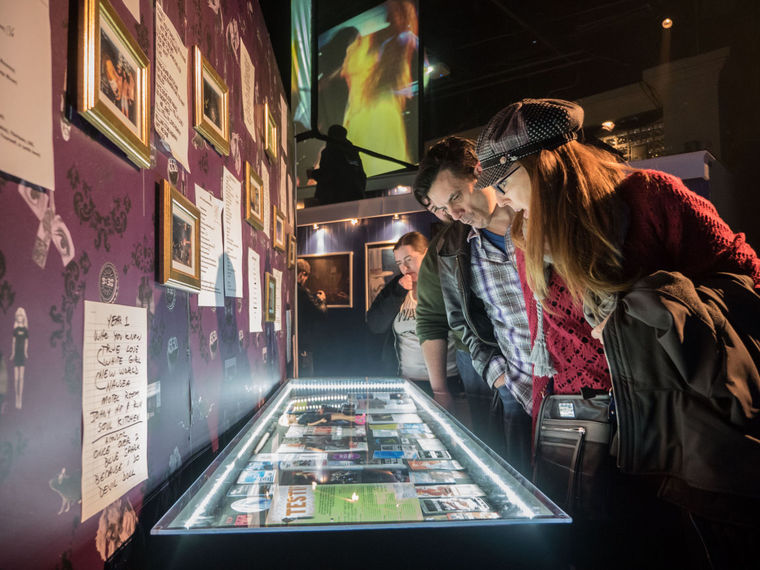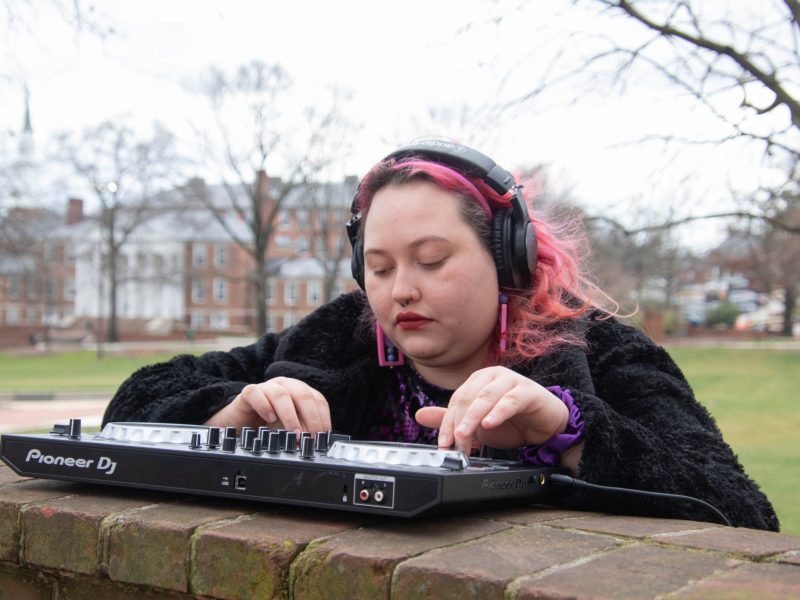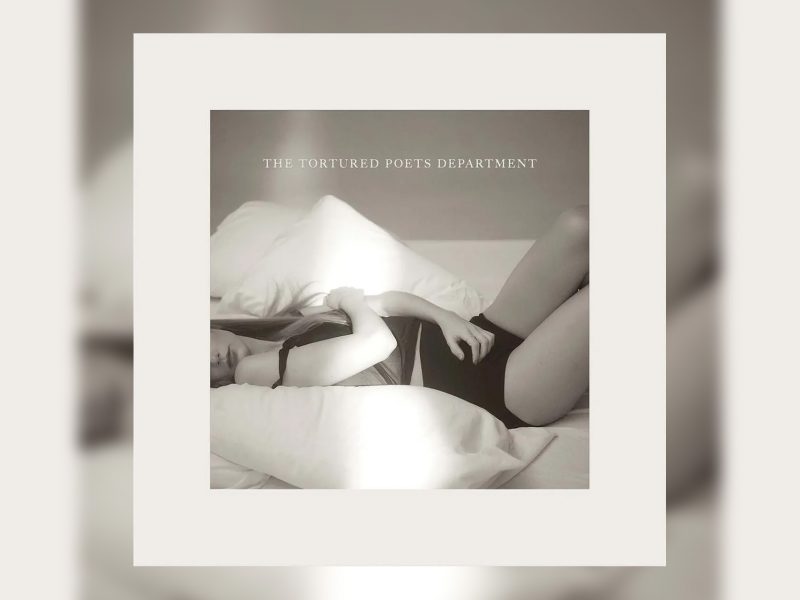Most people take years to decide on their first tattoo. For Megan Lahman, it was a simple, more impulsive decision. On Thursday, the third night of the 9:30 Club’s 35th anniversary exhibition, Lahman, a University of Maryland alumna, got the club’s logo inked on her wrist.
“It makes sense that the one place that made me want to have a tattoo, I get a tattoo there,” said Lahman, who graduated in 2009 with a civic journalism degree. She attended her first show at the club in 1998 and numerous shows since where she admired the tattoos on the arms of musicians in her favorite hardcore punk bands.

Courtesy of Jeremie Lecuyer/9:30 Club
“I have so many memories of coming here with friends … and my family,” she said. “We would come here so often that the door staff started to say, ‘Oh, it’s the Lahmans from Frostburg. How was the drive down?”
The 9:30 Club is a cornerstone for music lovers like Lahman in the D.C. area. In 35 years it grew from humble beginnings as a punk-rock oasis in a cramped F Street enclave to the renowned venue currently at V street in Northwest Washington Last week, the club celebrated this history and all those who were a part of it with the 9:30 World’s Fair, a five-day free event that transformed the familiar concert venue into an interactive multimedia museum.
From Backbar to the dressing room to the stage, galleries displayed old club schedules and fliers, classic concert footage from the club’s initial F Street venue, and countless photos of staff and musicians.
It was a sensory overload that triggered intense nostalgia. Spectators took trips down memory lane as they reached a recreation of the former F Street location, complete with the recordings of bands such as Green Day and Jesus Lizard from their original shows and even a slight stench made to emulate the distinct scent of cigarettes, sweat and rat feces of the smaller, crowded venue. And if the smell wasn’t enough to bring back memories of crowded concert halls, a mosh pit simulator let patrons step between two projector screens that showed concert footage from the vantage point of the sweaty mobs below the stage.

Courtesy of Jeremie Lecuyer/9:30 Club
“I haven’t stopped grinning,” said Jon Pacella, a Washingtonian who’s been coming to the club for 25 years. “Seeing all of the schedules and the chair where they recorded the shows at F street brought back memories.”
The interactivity was a reminder that as a fan and an attendee, you were a part of that history. From watching footage of Leon Bridges’ concert from inside The Cube — four enormous screens that projected concerts from all angles — to writing old memories from the club on the chalk wall on the first floor, the exhibits reinforced the intimacy that makes the 9:30 Club such a beloved venue. Spectators of all ages got to live out iconic moments in the club’s history and relive their own memories, scanning set lists and fliers along the way, exclaiming: “Look, David Bowie was here!” or “I missed that one because of my sister’s wedding.”
“I always felt like I was a part of the history in a way because of having seen a lot of amazing stuff here over the years,” said Lahman, one of at least 100 attendees to take advantage of free tattoos of the club’s logo offered on the main floor of the venue. “But for me [the exhibit] is just this lovely celebration of everything I love about this place.”
Those feelings extended to the longtime members of the staff. A whole wall was dedicated to photos of staff throughout the years, often described as “family.” Mini documentaries played along the balcony in which many senior staff members got emotional while talking about the club’s many achievements.

Courtesy of Jeremie Lecuyer/9:30 Club
For members of the staff like Karim Karefa, operations manager and head of security, the exhibit was a learning experience and a celebration of the people and the music that he has been working with for 13 years.
“I learned so much more about the club than I thought I knew.” said Karefa, who started working at the club in September 2002. “There’s a lot of history in the music that’s been played here; there’s a lot of history on those shelves.”
The shelves he referred to are a part of the music library designed for the exhibit. The permanent fixture houses 8,813 vinyl records and CDs of all the artists — from George Clinton to Little Dragon — who have played at the club, arranged in chronological order of their shows.
“Looking at the CD installation and trying to figure out how many of those shows I was actually present at — I stopped counting because it was just too much.”
With this many shows, “every day is something different,” Karefa said. But the 9:30 Club family is what keeps him coming to work. “I love the music, I love the shows, I love the atmosphere that it creates, but what keeps me coming to work is my staff.”
The World’s Fair exhibit was a celebration of music, history, D.C. and those who love all three. It brought out locals who have made the venue their home and proved that despite the passage of decades, new venues and changing demographics, the club is still a hot spot for D.C. culture.
“Growing up in the late ’90s, the 9:30 Club was the coolest place on earth,” Lahman said. “And it still is.”



